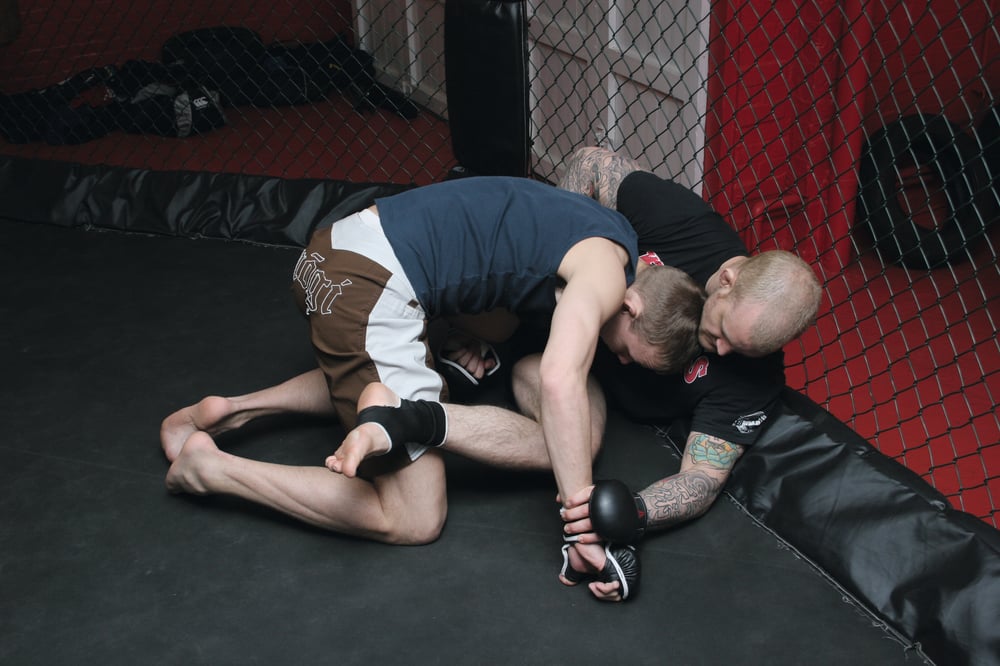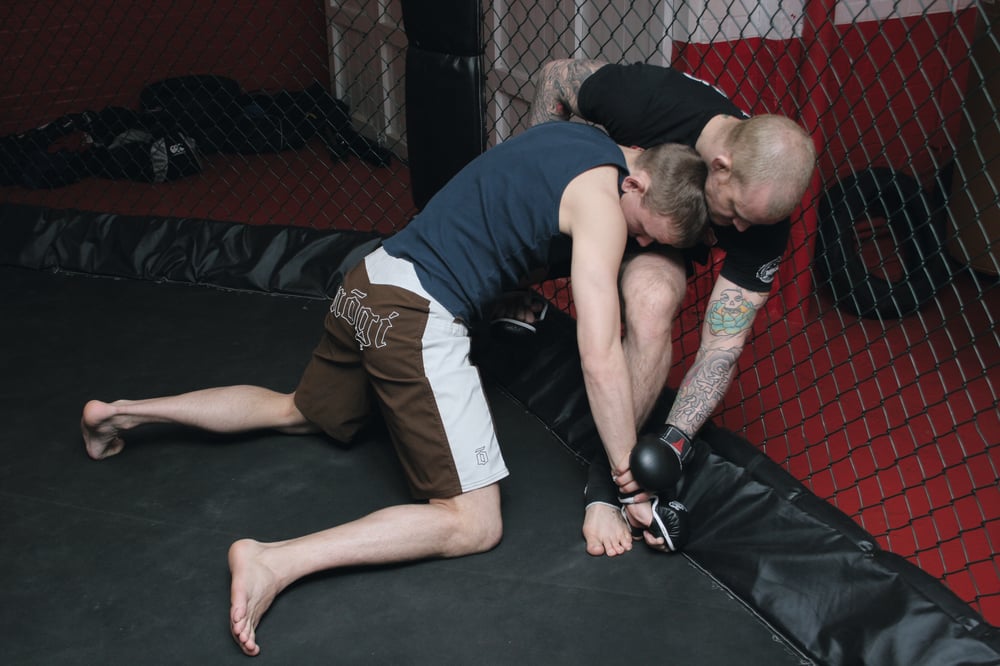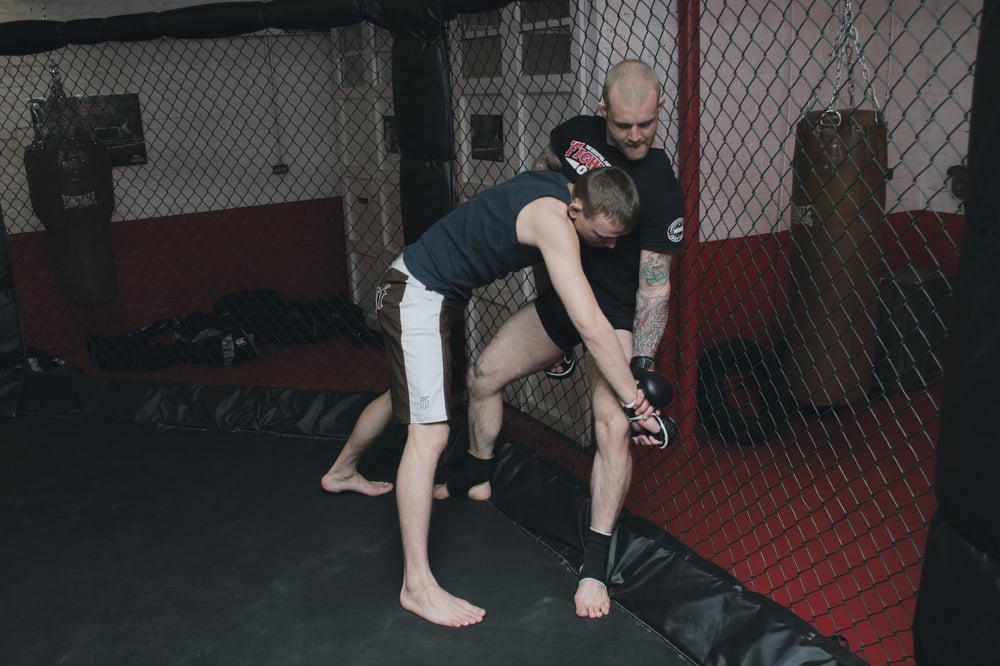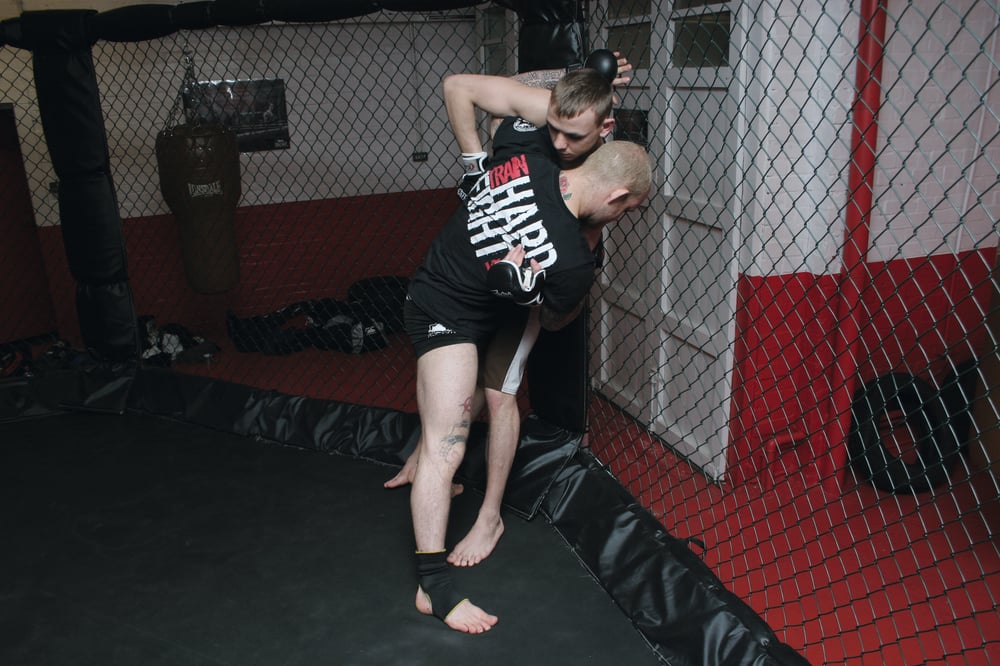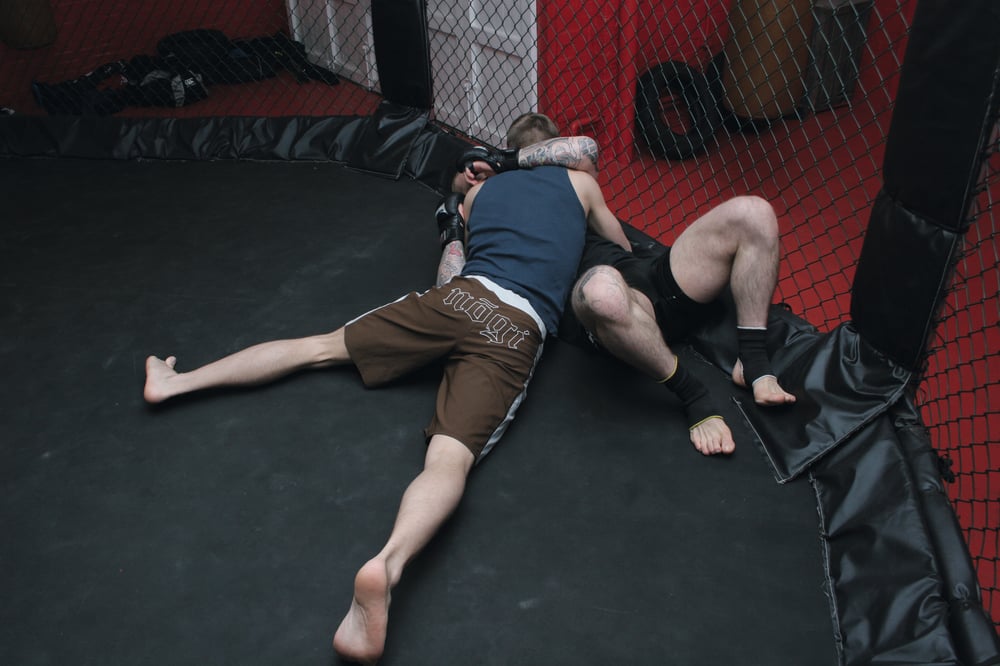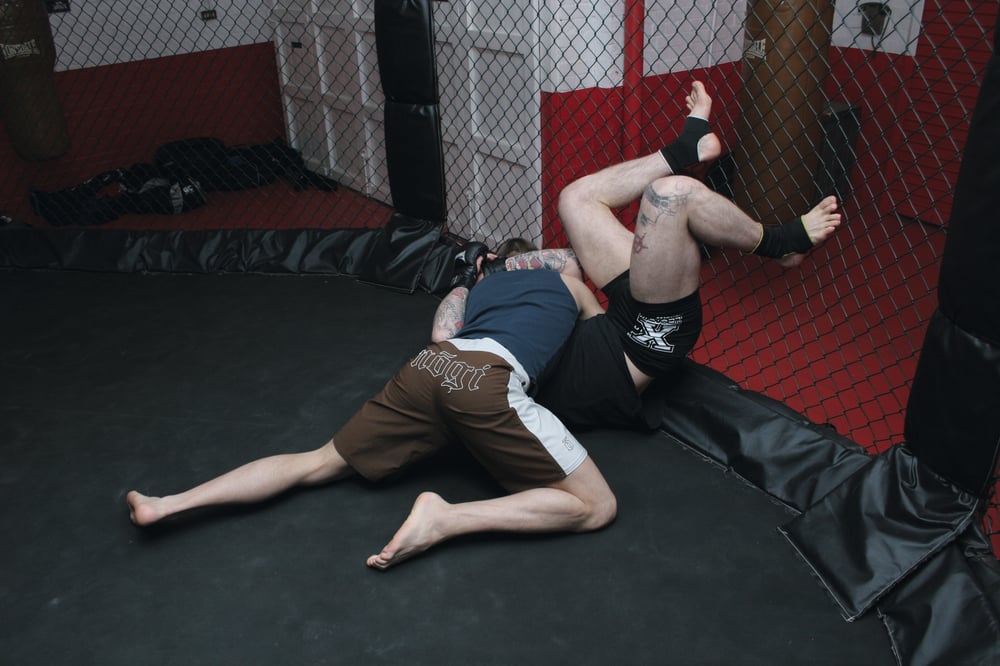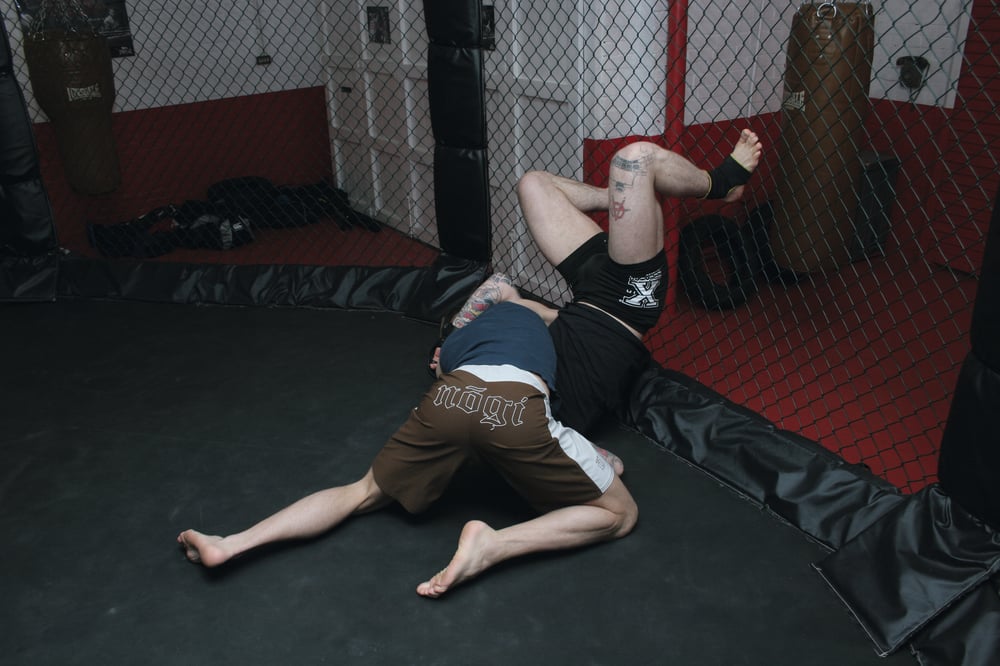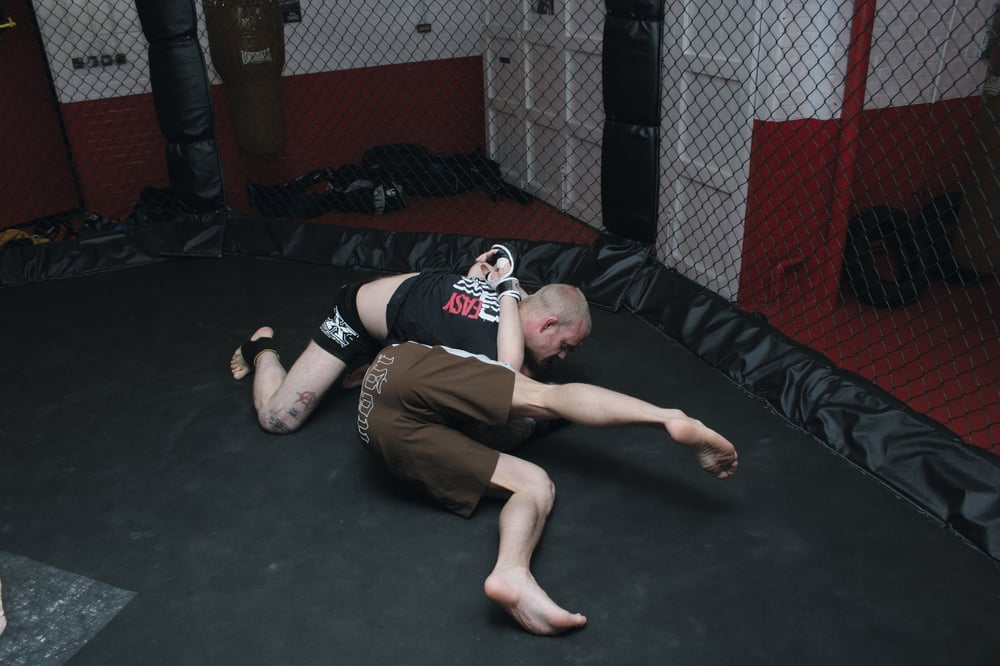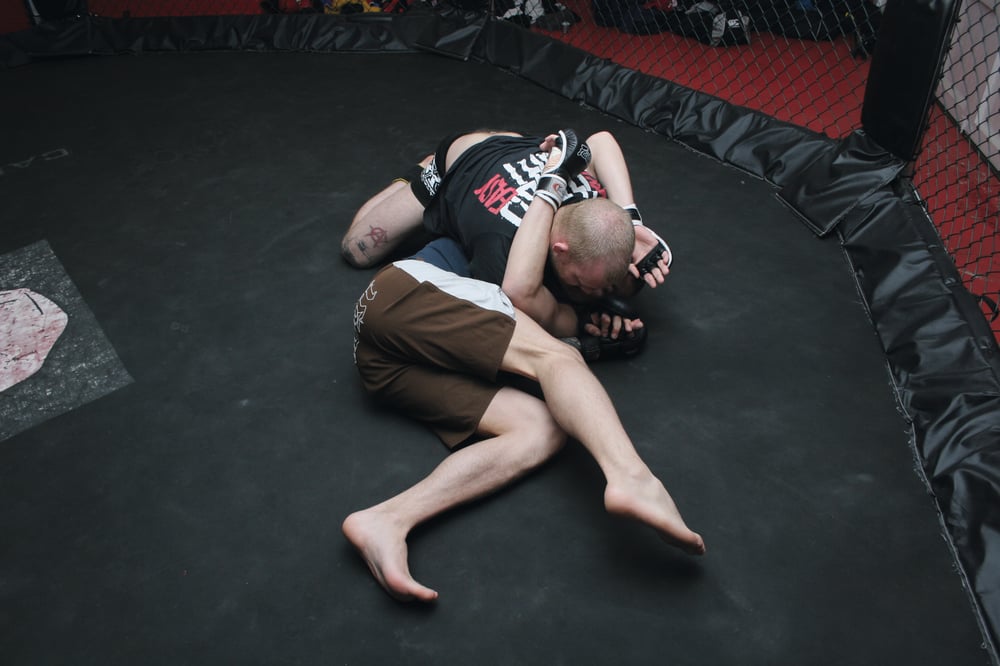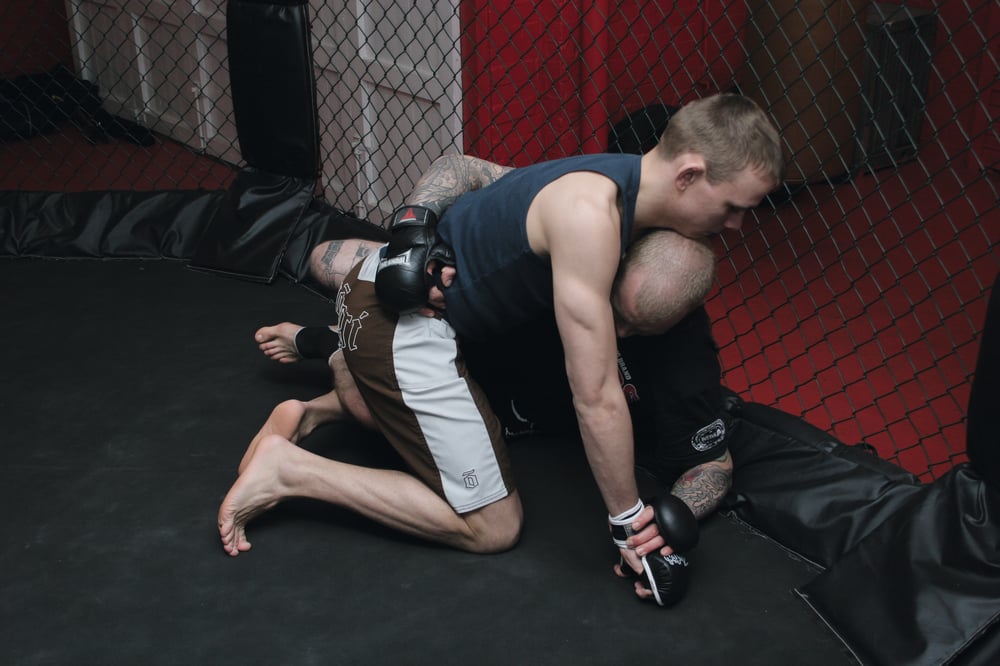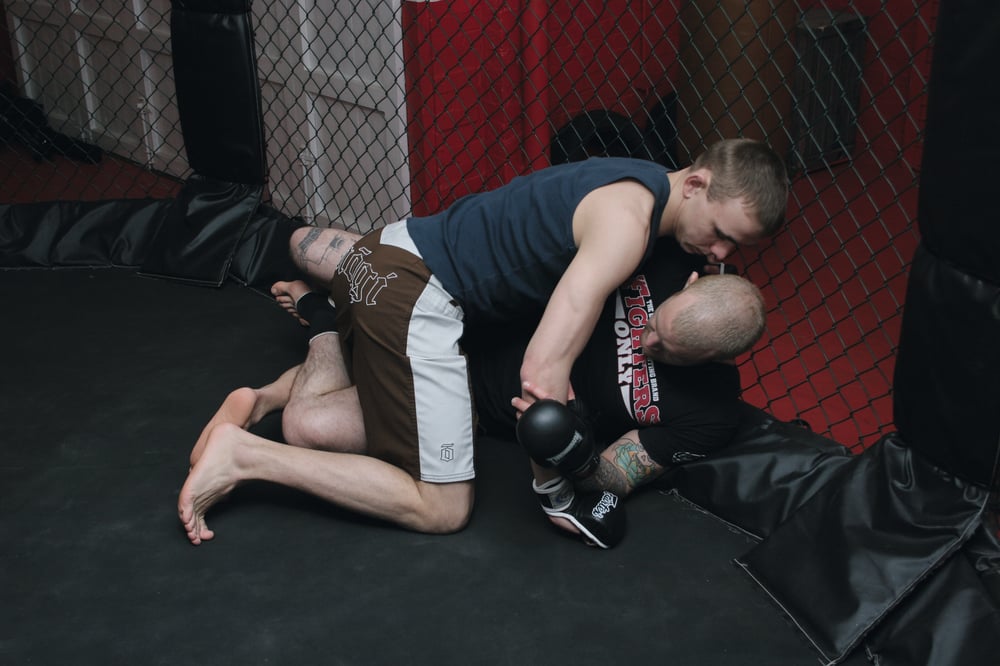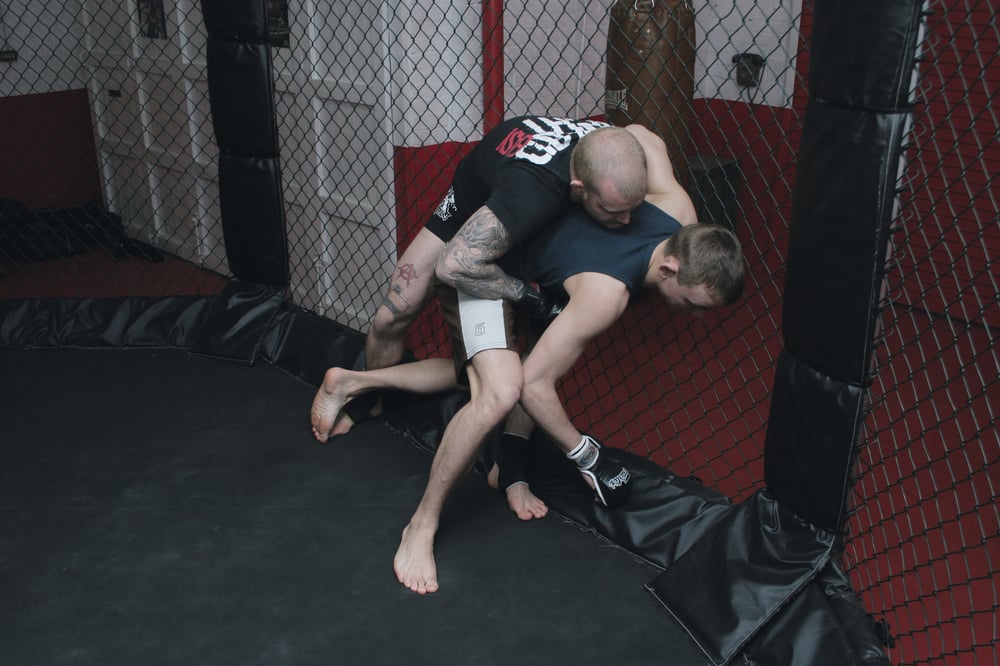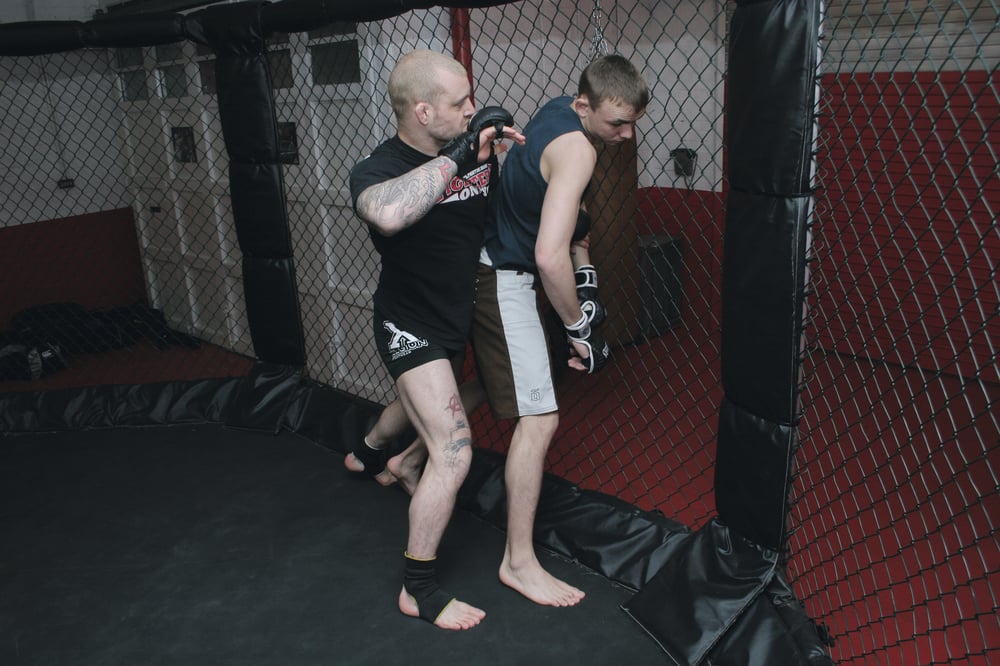
Issue 054
September 2009
The presence of the cage fence both enables and hinders grappling techniques. Understanding how to use the cage defensively as well as offensively is critical for the modern athlete, as is developing an awareness of where you are in relation to the fence during combat.
Standing Up from Guard
Gone are the days of fighters pinning another against the fence and simply chipping away with shots. Knowing how to get back to your feet by using the fence is a crucial skill seen time and time again.
Step 1 Alex has Pete pressed against the fence. Pete has closed guard and is using an overhook on the far side and a wrist control on the near side to stop Alex using ground 'n pound.
Step 2 Pete opens his guard and continues to scoot his butt back to get his head position above Alex’s.
Step 3 Pete stands up, maintaining his wrist control to prevent Alex ankle picking him.
Step 4 Pete uses the whizzer to hike Alex up away from a double-leg attempt.
Step 5 Pete opens up the wrist control and throws up an underhook.
Step 6 Pete drives up the underhook and pulls down on the overhook, wheeling Alex around and reversing the cage control position.
Using the Cage to Bridge
Being pinned on your back limits your options, but when you’re in reach of the cage you can use the fence to execute an unusual but effective escape.
Step 1 Alex has pinned Pete in side control.
Step 2 Pete turns his hips and walks his feet up the fence.
Step 3 Pete walks the fence until his spine is straight.
Step 4 Pete pushes off against the fence and slides his head out of the pocket, using his arm and shoulder to take the strain off his neck.
Step 5 Pete kicks against the wall hard enough to power him all the way over, landing in side control.
Step 6 Pete completes the reversal by adding shoulder pressure to his pin. Pete has circled up and around Alex’s head, steering Alex's legs away from the fence so that he can’t employ the same escape.
Standing Up from Half Guard
When Chuck Liddell fought Randy Couture for the second time, he was able to prevent Randy capitalizing on his takedowns by immediately scrambling to his feet.
The key to success with stand ups is not allowing the opponent to establish his pin properly after the takedown by starting the scramble the very instant you hit the mat.
Step 1 Alex has Pete in half guard and pushes him against the fence. Pete is covering Alex’s free arm to defend his strikes.
Step 2 Pete establishes an underhook and goes deep to a seatbelt grip, hipping out further to the side. He controls the wrist with his other arm.
Step 3 Pete stands up against the fence by driving up on his back leg – one-legged squats and deadlifts are ideal for developing the strength and balance required for this technique.
Step 4 Pete shucks Alex’s arm (freeing his head) and goes to a bodylock.
Step 5 Pete can attempt a takedown, or, as seen here, he creates space and as Alex turns to face him he is ready to elbow.
...

